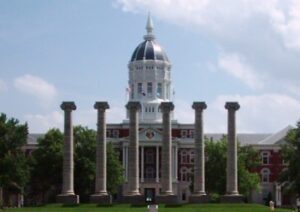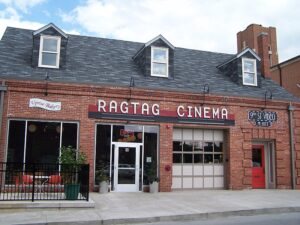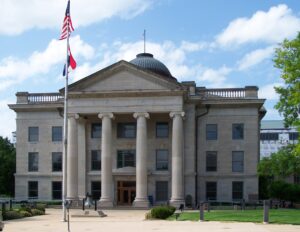Columbia, Missouri, situated in the heart of the state, embodies a unique blend of history, culture, and modernity. As the fourth-largest city in Missouri, Columbia boasts a dynamic real estate landscape, offering diverse opportunities for homeownership and investment.
History and Development
Established in 1821, Columbia has evolved from a small frontier town into a thriving urban center.
Initially founded for its strategic location along the Missouri River, the city experienced significant growth during the 19th century with the arrival of railroads and the establishment of the University of Missouri.
Key Features and Attractions
 Today, Columbia is renowned for its vibrant cultural scene, historic architecture, and picturesque landscapes. The city’s downtown district is a bustling hub of activity, featuring eclectic shops, restaurants, and entertainment venues. Additionally, Columbia is home to several renowned landmarks, including the iconic Jesse Hall and the scenic MKT Nature and Fitness Trail.
Today, Columbia is renowned for its vibrant cultural scene, historic architecture, and picturesque landscapes. The city’s downtown district is a bustling hub of activity, featuring eclectic shops, restaurants, and entertainment venues. Additionally, Columbia is home to several renowned landmarks, including the iconic Jesse Hall and the scenic MKT Nature and Fitness Trail.
Demographic Trends and Population Growth
With a population exceeding 120,000 residents, Columbia is a diverse and inclusive community. The city’s population is characterized by its youthful energy, thanks to the presence of the University of Missouri and other educational institutions. Moreover, Columbia’s steady population growth reflects its status as a desirable destination for individuals and families seeking a high quality of life.
In conclusion, Columbia, MO, stands as a dynamic and inviting city with a rich history, diverse culture, and thriving real estate market. From charming historic neighborhoods to modern developments, Columbia offers something for every homebuyer and investor seeking to be part of this vibrant community.
Current Real Estate Market Trends
The real estate market in Columbia, MO, is a dynamic ecosystem influenced by various factors ranging from economic conditions to demographic shifts. Understanding the current trends is crucial for both buyers and sellers navigating this competitive landscape.
Median Home Prices and Trends
One of the primary indicators of market activity is the median home price, which provides insight into the overall affordability and demand for housing in Columbia. As of 2024, the median home price in Columbia stands at $254,450, reflecting a steady increase over the past year. This upward trend signals robust demand and limited inventory, creating favorable conditions for sellers.
Inventory Levels and Days on Market
Inventory levels play a significant role in shaping the dynamics of the real estate market. In Columbia, inventory levels have been relatively tight, with a limited supply of available homes for sale. This scarcity has led to increased competition among buyers, driving prices higher and reducing the average days on market for listed properties.
Impact of COVID-19
Like many cities across the country, Columbia has felt the impact of the COVID-19 pandemic on its real estate market. While the initial onset of the pandemic caused disruptions and uncertainty, the market has demonstrated resilience in the face of adversity. With remote work becoming more prevalent and individuals seeking larger living spaces, the demand for homes in Columbia has remained strong.
Key Takeaways:
- Median home prices in Columbia have experienced steady growth, indicating a robust market.
- Limited inventory levels have contributed to increased competition among buyers.
- Despite challenges posed by COVID-19, the real estate market in Columbia has shown resilience and adaptability.
In conclusion, staying informed about the current real estate market trends in Columbia is essential for making informed decisions whether you are buying, selling, or investing in property. By keeping abreast of these trends, stakeholders can navigate the market with confidence and seize opportunities for success.
Educational and Healthcare Facilities
In the realm of real estate, factors beyond just property features and location significantly influence buyer decisions. The quality of education and accessibility to healthcare facilities are paramount considerations for prospective homeowners in Columbia, MO.
Quality of Education
- School Districts: Columbia is renowned for its exceptional educational institutions, offering a range of public and private schools catering to diverse learning needs.
- Public Schools: The Columbia Public School District stands out for its rigorous academic programs and extracurricular opportunities.
- Private Schools: Several private schools, such as Columbia Independent School and Christian Chapel Academy, provide alternative educational options.
- Higher Education: Home to the University of Missouri, Columbia College, and Stephens College, the city attracts students and faculty members from across the globe, contributing to its cultural vibrancy and intellectual capital.
- Academic Achievements: Columbia’s schools consistently rank high in state and national assessments, reflecting the community’s commitment to excellence in education.
Accessibility to Healthcare Facilities
 Hospitals and Medical Centers: Columbia boasts an extensive network of healthcare facilities, ensuring residents have access to quality medical care.
Hospitals and Medical Centers: Columbia boasts an extensive network of healthcare facilities, ensuring residents have access to quality medical care.
– University of Missouri Health Care: With multiple hospitals and clinics, MU Health Care offers comprehensive medical services, including specialized care in various fields.
– Boone Hospital Center: A leading healthcare provider in the region, Boone Hospital Center is known for its state-of-the-art facilities and patient-centered approach.
- Specialized Services: Beyond general healthcare, Columbia’s medical facilities offer specialized services, ranging from cancer treatment to orthopedic care, enhancing the city’s appeal to residents seeking top-notch medical care.
- Community Health Initiatives: In addition to traditional healthcare services, Columbia prioritizes community health initiatives, promoting wellness and preventive care through outreach programs and health education efforts.
In conclusion, Columbia, MO, stands out not only for its vibrant real estate market but also for its robust educational system and accessible healthcare facilities. These factors contribute to the city’s desirability as a place to live, work, and raise a family, making it an attractive destination for homebuyers seeking a high quality of life.
Lifestyle and Recreation
Living in Columbia, MO, offers residents a diverse array of lifestyle amenities and recreational opportunities that enrich the overall living experience.
Parks and Outdoor Spaces
- Cosmo Park: Spanning over 533 acres, Cosmo Park is the largest in Columbia, offering playgrounds, sports fields, and scenic walking trails for residents to enjoy.
- Rock Bridge Memorial State Park: Nature enthusiasts can explore the rugged terrain and limestone bluffs of Rock Bridge Memorial State Park, which features hiking trails, caves, and a natural rock bridge formation.
- Stephens Lake Park: Situated in the heart of the city, Stephens Lake Park provides a tranquil oasis with an 11-acre lake, paddleboat rentals, and a swimming beach, perfect for family outings and picnics.
Cultural Attractions

- Missouri Theatre: As a historic landmark, the Missouri Theatre hosts a variety of cultural events, including concerts, plays, and film screenings, enriching the cultural fabric of the community.
- Columbia Art League: Art enthusiasts can explore local talent at the Columbia Art League, which showcases rotating exhibits of contemporary artwork and offers classes and workshops for aspiring artists.
- The District: Downtown Columbia, known as The District, is a vibrant hub of dining, shopping, and entertainment, featuring eclectic boutiques, gourmet restaurants, and live music venues.
Dining and Entertainment
 Food Scene: Columbia boasts a dynamic culinary scene, with an abundance of restaurants offering diverse cuisines, from farm-to-table eateries to international fare, satisfying every palate.
Food Scene: Columbia boasts a dynamic culinary scene, with an abundance of restaurants offering diverse cuisines, from farm-to-table eateries to international fare, satisfying every palate.
- Live Music: Music lovers can enjoy live performances at venues like The Blue Note and Rose Music Hall, which host an eclectic lineup of local and touring bands, ensuring there’s always something for everyone.
- Festivals and Events: Throughout the year, Columbia hosts a myriad of festivals and events, such as the True/False Film Festival, celebrating music, culture, and the arts.
In essence, Columbia, MO, provides an enriching lifestyle with a perfect blend of outdoor recreation, cultural attractions, and culinary delights, making it an ideal destination for residents seeking a vibrant and fulfilling community experience.
Sustainability and Green Living
In Columbia, MO, sustainability and green living initiatives play a significant role in shaping the local real estate landscape, reflecting the community’s commitment to environmental stewardship and conservation efforts.
Energy-Efficient Homes
- Energy Star Certification: Many homes in Columbia boast Energy Star certification, indicating they meet stringent energy efficiency standards set by the Environmental Protection Agency (EPA), resulting in lower utility bills and reduced environmental impact.
- Solar Panels: Increasingly, homeowners are embracing solar energy by installing solar panels on their properties, harnessing renewable energy sources and reducing reliance on traditional power grids.
- Smart Home Technology: The integration of smart home technology, such as programmable thermostats and energy-efficient appliances, enhances energy management and reduces overall consumption, aligning with sustainable living principles.
Green Building Practices
- LEED-Certified Buildings: The city encourages green building practices through Leadership in Energy and Environmental Design (LEED) certification, promoting resource efficiency, waste reduction, and healthy indoor environments in commercial and residential construction projects.
- Sustainable Materials: Builders and developers prioritize the use of sustainable materials, such as recycled steel, bamboo flooring, and low-VOC paints, to minimize environmental impact and create healthier living spaces for residents.
- Water Conservation: Sustainable landscaping practices, including drought-resistant plants, rainwater harvesting systems, and permeable pavement, help conserve water resources and mitigate stormwater runoff, contributing to a more resilient and eco-friendly community.
Community Gardens and Conservation Efforts
- Community Gardens: Columbia residents have access to community gardens and urban farming initiatives, fostering a sense of community engagement, promoting local food production, and increasing green spaces within the city.
- Conservation Programs: The city supports conservation programs aimed at preserving natural habitats, protecting wildlife, and enhancing biodiversity, ensuring a sustainable environment for current and future generations to enjoy.
- Green Infrastructure: Investments in green infrastructure, such as green roofs, bioswales, and permeable surfaces, mitigate urban heat island effects, improve air and water quality, and enhance overall livability in Columbia’s neighborhoods.
In summary, Columbia, MO, embraces sustainability and green living as integral components of its real estate market, offering residents the opportunity to live in eco-friendly homes, surrounded by vibrant green spaces, and contributing to a more sustainable and resilient community.
Economic Factors Impacting Real Estate
The real estate market in Columbia, MO, is deeply influenced by various economic factors, shaping both demand and supply dynamics in the housing sector.
Employment Trends and Local Economy
- Diverse Economy: Columbia benefits from a diverse economic landscape, with sectors such as healthcare, education, and technology playing significant roles in driving employment opportunities and economic growth.
- University Influence: The presence of the University of Missouri not only contributes to the city’s intellectual capital but also serves as a major economic engine, attracting talent and fostering innovation.
- Stability: The city’s stable employment base, bolstered by the university and other major employers, instills confidence in prospective homebuyers, contributing to sustained demand in the real estate market.
Interest Rates and Mortgage Trends
- Impact on Affordability: Fluctuations in interest rates directly affect the affordability of housing in Columbia. Lower interest rates generally stimulate demand by reducing borrowing costs, while higher rates may dampen demand by increasing monthly mortgage payments.
- Mortgage Availability: Access to mortgage financing plays a crucial role in facilitating home purchases. Favorable lending conditions, characterized by competitive interest rates and relaxed lending standards, encourage more buyers to enter the market.
- Refinancing Activity: Periods of low-interest rates often trigger increased refinancing activity among homeowners, freeing up funds for discretionary spending or home improvements, which can indirectly impact the housing market.
Government Policies and Regulations

- Zoning Regulations: Zoning laws and land-use regulations influence the supply of developable land and the types of properties that can be built, affecting housing affordability and availability in different neighborhoods.
- Tax Policies: Property tax rates and incentives for homeownership, such as tax deductions for mortgage interest payments, influence the financial aspects of homeownership and may sway buyers’ decisions.
- Infrastructure Investments: Public investments in infrastructure projects, such as transportation networks and utility systems, enhance the livability of neighborhoods and can drive demand for properties in areas with improved amenities.
In conclusion, economic factors wield substantial influence over the real estate market in Columbia, MO, shaping the dynamics of supply, demand, and affordability for prospective homebuyers and sellers alike. Understanding these factors is essential for navigating the complexities of the local housing market successfully.
Future Outlook
The future outlook for the real estate market in Columbia, MO, presents a mix of opportunities and challenges as the city continues to evolve and grow.
Anticipated Trends and Developments
- Urban Revitalization: With ongoing efforts to revitalize downtown Columbia and surrounding urban areas, there’s a growing trend towards mixed-use developments, including residential, commercial, and recreational spaces. This revitalization is expected to attract both residents and businesses, driving demand for urban housing options.
- Suburban Expansion: As the city expands outward, suburban neighborhoods are likely to experience continued growth, fueled by factors such as affordability, family-friendly amenities, and access to quality schools. Suburban development may lead to the emergence of new residential communities and increased demand for single-family homes.
- Technology Integration: Advancements in technology, such as virtual tours, AI-powered property search platforms, and smart home features, are expected to reshape the real estate industry in Columbia. These innovations will enhance the homebuying experience and streamline processes for both buyers and sellers.
Potential Challenges
- Affordability Concerns: Despite its relatively affordable housing market compared to national averages, Columbia may face affordability challenges as home prices continue to rise. Ensuring housing affordability for residents, especially first-time homebuyers and low-income families, will be crucial for maintaining a healthy real estate market.
- Infrastructure Needs: As the population grows and development expands, there will be increased pressure on infrastructure, including transportation systems, utilities, and public services. Addressing infrastructure needs proactively will be essential for supporting continued growth and maintaining the city’s livability.
- Environmental Sustainability: With growing awareness of environmental issues, there’s a rising demand for sustainable and eco-friendly housing options. Meeting this demand will require developers to integrate green building practices, energy-efficient technologies, and environmentally conscious design principles into new construction projects.
Opportunities for Innovation
- Mixed-Use Developments: The concept of live-work-play communities presents an opportunity for developers to create vibrant, walkable neighborhoods that combine residential, commercial, and recreational amenities. These mixed-use developments cater to modern lifestyles and offer convenience and connectivity for residents.
- Adaptive Reuse: Repurposing existing buildings for residential use, such as converting old warehouses or historic structures into loft apartments, presents an opportunity to preserve architectural heritage while meeting housing demand. Adaptive reuse projects contribute to neighborhood revitalization and create unique living spaces.
- Community Engagement: Engaging with local communities and stakeholders throughout the development process fosters a sense of ownership and ensures that new projects align with the needs and values of residents. Community-driven development initiatives promote inclusivity and sustainability, enhancing the overall quality of life in Columbia.
In summary, the future of the real estate market in Columbia, MO, holds promise for continued growth and innovation, provided that stakeholders remain proactive in addressing challenges and seizing opportunities for sustainable development. By embracing change and prioritizing the needs of residents, Columbia can build a resilient and thriving real estate landscape for generations to come.
Conclusion
In conclusion, the real estate market in Columbia, MO, presents a dynamic landscape characterized by diverse housing options, vibrant neighborhoods, and promising economic prospects. Throughout this article, we have delved into various aspects of Columbia’s real estate scene, from its rich history and demographic trends to current market conditions and future projections.
Key Takeaways
- Market Trends: Despite the challenges posed by the COVID-19 pandemic, the Columbia real estate market has demonstrated resilience, with steady median home prices and a healthy inventory of available properties. However, fluctuations in market conditions underscore the importance of staying informed and adaptable in navigating the buying or selling process.
- Neighborhood Diversity: Columbia boasts a wide range of neighborhoods, each offering its unique blend of amenities, attractions, and community vibes. Whether you’re drawn to the urban energy of downtown or the serene charm of suburban enclaves, there’s something for every lifestyle preference in Columbia.
- Economic Stability: The city’s robust economy, driven by diverse industries and a thriving academic sector anchored by the University of Missouri, provides a solid foundation for real estate investment and growth. Employment opportunities, coupled with favorable interest rates, contribute to Columbia’s appeal as a desirable place to live and work.
- Sustainability Initiatives: Columbia’s commitment to sustainability and green living is evident in its efforts to promote energy-efficient homes, green building practices, and community conservation projects. These initiatives not only benefit the environment but also enhance the quality of life for residents and contribute to the city’s long-term viability.
Looking Ahead
As we look to the future, Columbia is poised for continued evolution and growth in its real estate market. Anticipated trends, such as urban revitalization, suburban expansion, and technological innovation, present exciting opportunities for developers, investors, and residents alike. However, it’s essential to address potential challenges, including affordability concerns, infrastructure needs, and environmental sustainability, to ensure that Columbia remains a thriving and inclusive community for all.
In conclusion, Columbia, MO, offers a dynamic and diverse real estate landscape characterized by resilience, innovation, and opportunity. Whether you’re a prospective homebuyer, seller, or investor, the Columbia real estate market holds promise for a bright and prosperous future.
Data Sources
- Zillow (https://www.zillow.com/)
- Trulia (https://www.trulia.com/)
- Realtor.com (https://www.realtor.com/)
- RE/MAX (https://www.remax.com/)
- Homes.com (https://www.homes.com/)
- Redfin (https://www.redfin.com/)
- Weichert (https://www.weichert.com/)
- RocketHomes (https://www.rockethomes.com/)
- Century 21 (https://www.century21.com/)
- Movoto (https://www.movoto.com/)
- Coldwell Banker (https://www.coldwellbanker.com/)
- Iron Gate Real Estate (https://www.irongaterealty.com/)
- CoMo Realty (https://www.comorealty.com/)
- Copper Creek Realty (https://www.coppercreekrealty.com/)
- House of Brokers Realty (https://www.houseofbrokers.com/)
- Realty.com (https://www.realty.com/)
- Girard Realty (https://www.girardrealty.com/)
- Craigslist (https://www.craigslist.org/)
- University of Missouri (https://www.missouri.edu/)

